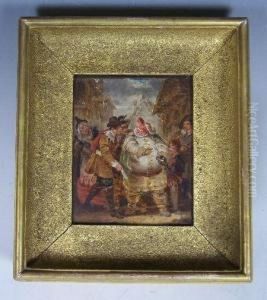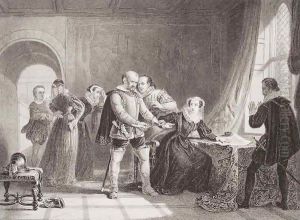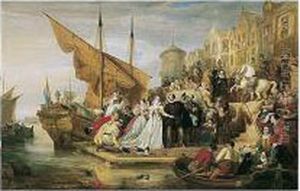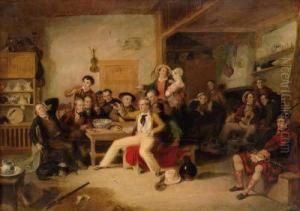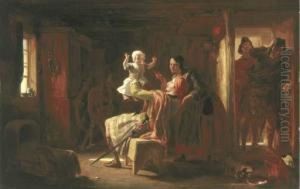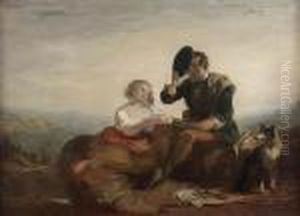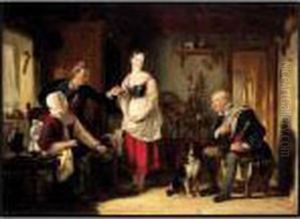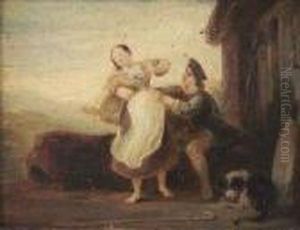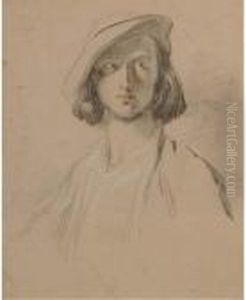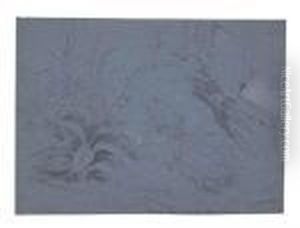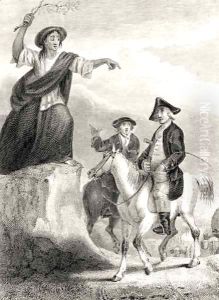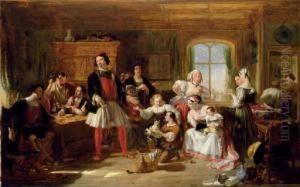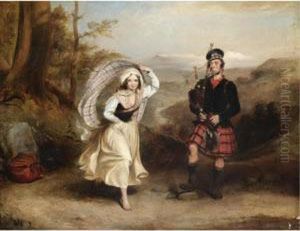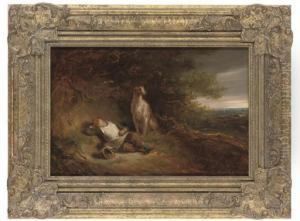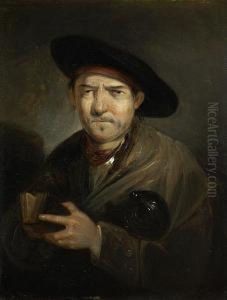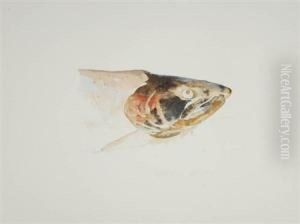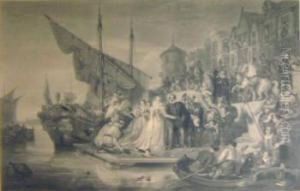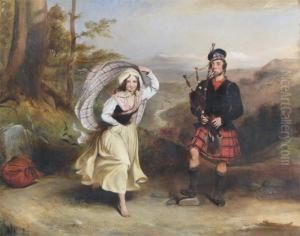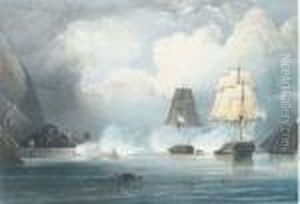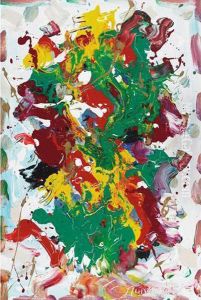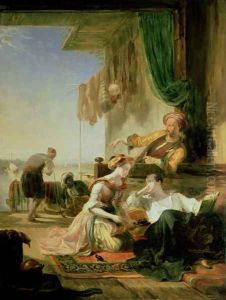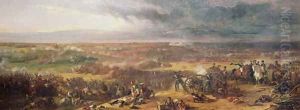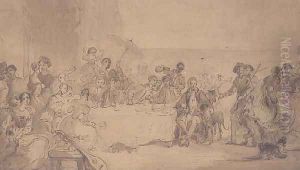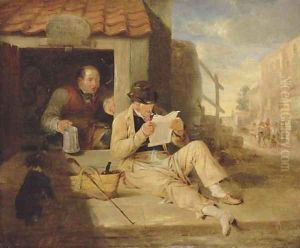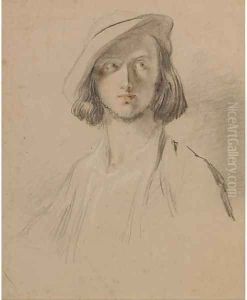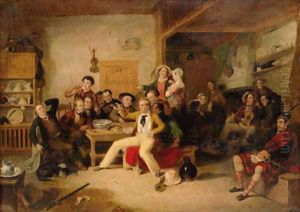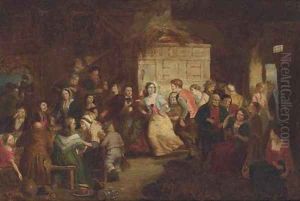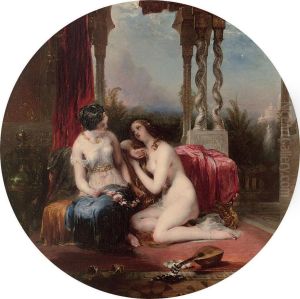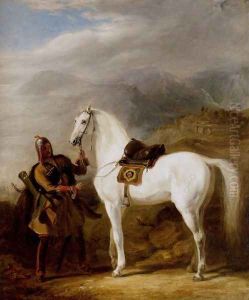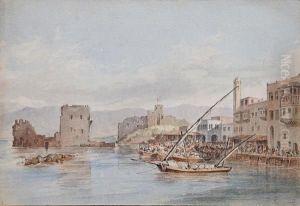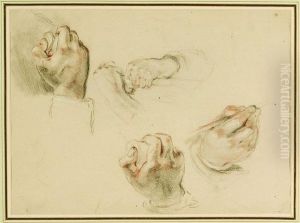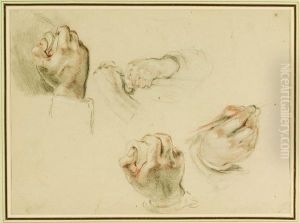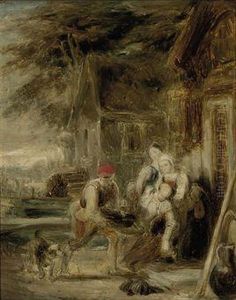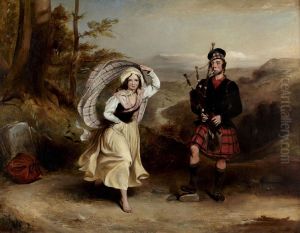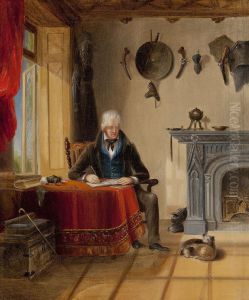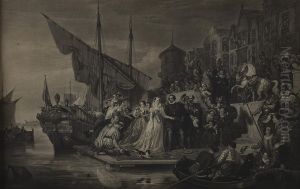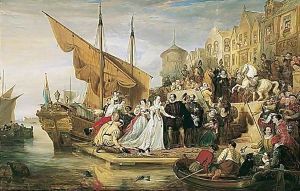Sir William Allan Paintings
Sir William Allan was a Scottish historical painter, watercolourist, and illustrator, born in Edinburgh on 13th February 1782. Allan demonstrated a keen interest in art from an early age and was apprenticed to a coach painter. His talent was recognized early on, and he was subsequently admitted to the Trustees' Academy in Edinburgh, where he received a more formal art education.
Allan's early works were chiefly illustrations for books and engravings, which reflected a meticulous attention to detail and a strong narrative quality. In 1805, he traveled to London and then embarked on an extensive tour of Russia and the Ottoman Empire, which lasted for several years. The experiences and sights from this journey profoundly influenced his artistic style and subject matter. He became known for his dramatic scenes and historical events, often featuring exotic locations he visited.
Returning to Britain in 1814, Allan's paintings began to gain recognition. His works were exhibited at the Royal Academy and the British Institution, and he became associated with the leading artistic figures of the time. His painting 'The Slave Market' received significant attention and was followed by other notable works like 'The Murder of Archbishop Sharp' and 'Battle of Waterloo', which further established his reputation.
In 1826, Allan was elected a fellow of the Royal Society of Edinburgh and, in 1838, he became the president of the Royal Scottish Academy—an important position that he held until his death. He was knighted by Queen Victoria in 1842, which was a mark of his contributions to the art world and his status as a leading artist of his time.
Sir William Allan's work is characterized by its vivid representation of history and its characters. Although not as well known as some of his contemporaries, his contributions to historical painting and his influence on Scottish art are significant. His travels in Russia also made him an important conduit for cultural exchange between Britain and the Russian Empire. He passed away on 23 February 1850 in Edinburgh. Allan's paintings can still be seen in galleries across the UK, including the National Gallery of Scotland, and they continue to be appreciated for their historical value and artistic merit.
